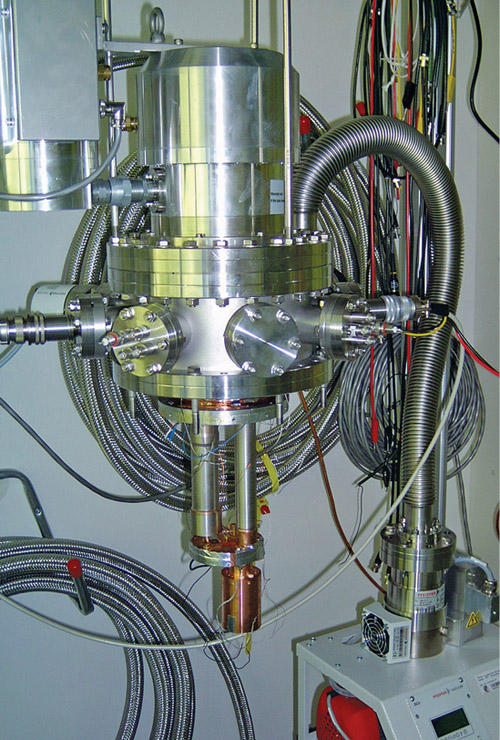
What is the temperature on other planets? -150°C at the orbit of Jupiter, -230°C at the orbit of Pluto and below -55°C to -65°C at moon, Mars and asteroids. At such low temperatures, conventional-temperature electronics is not of help.
So researchers are pioneering a technology called ‘low-temperature electronics’ or ‘cryoelectronics’. Cryoelectronic materials with high carrier mobility and reliability might provide a better solution for circuits to be used in low temperatures.
What is cryoelectronics?
‘Cryo’ is derived from Greek word ‘kryo’ that means ‘icy cold’ or ‘frost.’ Cryogenic temperature ranges from -150°C to -273°C. Cryoelectronics deals with the production of low-temperature electronic devices and utilisation of low-temperature phenomenon. Examples of these devices include complementary metal-oxide semiconductor (CMOS) diodes and field-effect transistors.
Why traditional electronics cannot be used in space?
Electronics plays an important role in spacecrafts. It is used in sensors, cameras, wireless data transmission, etc. Conventional-temperature electronics works between -55°C/-65°C and 125°C. Low-temperature electronics, on the other hand, works at temperatures ranging from -150°C to -273°C (refer Fig. 1).
In military and scientific aircrafts, many sensors such as X-ray detectors are used for astronomical observation or surveillance. These must operate at a low temperature. Cosmic background explorer, infrared telescope in space and infrared space observatory are some of the devices which make use of cryoelectronics-based electronic components.
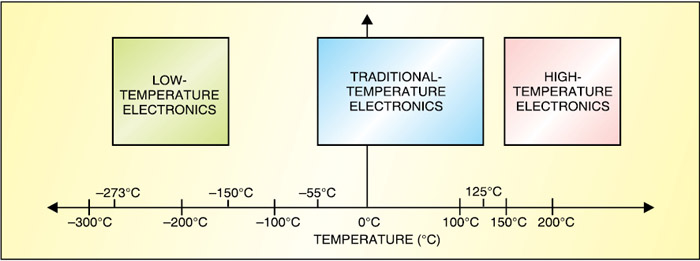
Conventional-temperature electronic circuits require a thermal source for low-temperature applications. In many situations, such techniques are undesirable or impractical. Passive techniques have limited lifespans. Active technologies, on the other hand, require additional power and sub-systems. This makes electronic circuits bulky, heavy and complex.
Cryoelectronics with superconductors
Superconductivity is a state of matter. The thermal, electric and magnetic properties of many chemical elements, compounds and alloys become strikingly different when cooled to exceedingly low temperatures. These become superconductors at such temperatures.
Superconductivity was discovered in 1911 by Dutch physicist Heike Kamerlingh Onnes, who was awarded Nobel Prize in 1913 for his low temperature research.
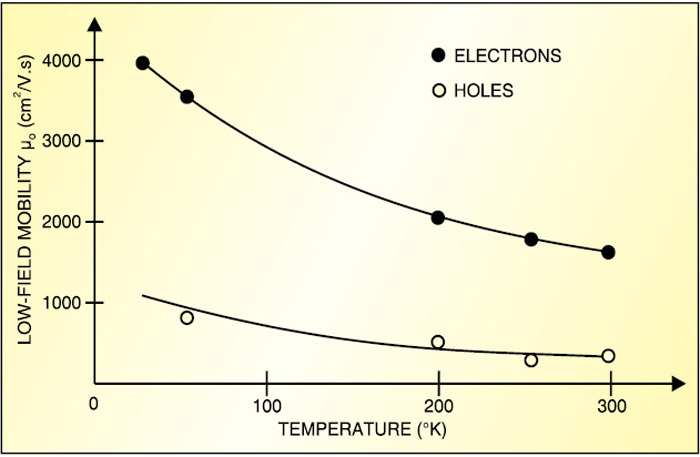
Hundreds of materials are known to become superconducting at low temperatures. Twenty six of the chemical elements (all of them metals) are superconductors in their usual crystallographic forms at atmospheric pressure. Aluminium, tin, lead and mercury are a few among these. In addition, thirteen chemical elements that are metals, semi-metals and semiconductors act as superconductors at low temperatures and high pressures. Among these are uranium, silicon and selenium. Semiconductors exhibit an increase in mobility at low temperatures (shown in Fig. 2). This is because at low temperature their atomic lattice vibration decreases and mobility increases significantly.
The best superconductors today are alloys or compounds. Examples include disilver fluoride or silver subfluoride (Ag2F) and compound of carbon and potassium (C8K). Some semiconducting compounds, such as tin telluride (SnTe), can become superconducting if properly infused with impurities.
Transition temperature and critical magnetic field of some superconducting elements are shown in the table.
Cryoelectronics: milestone in space technology
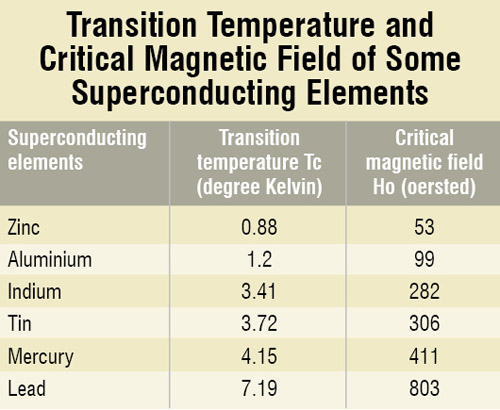
NASA is using components such as semiconductor switching devices, magnetic capacitors, digital-to-analogue and analogue-to-digital converters, DC-AC converters, operational amplifiers, oscillators, and power conversion and conditioning circuits based on cryoelectronics. Cryoelectronics is also used in the driver circuitry of motors or actuators. Commercial high-speed pulse-width-modulation (PMW) chips have been characterised in terms of their performance in the range of 25°C to -196°C. Silicon-on-insulator can be used to make MOS devices with gates as small as 40 nm.
Advantages of cryoelectronics for space technology are increased circuit speed, low power dissipation, fast switching, high semiconductor and metal thermal conductivity, reduction in thermally induced failures of components and devices, increased integration density primarily because of reduced operating supply voltages, and improved digital and analogue circuit performance (in terms of switching speed, noise margin and gain bandwidth).
Disadvantages include novel fabrication technique required, low carrier mobility, high cost of circuit and high volume.
Cryoelectronics finds applications in outer-space satellites, e.g., in sensors for flow, temperature and pressure measurement; detectors of cosmic radiation, such as infrared and ultra-violet detectors; nuclear astronomy instruments; medical instruments; dynamic random-access memories; high-end computers and organic electronics.
Latest developments
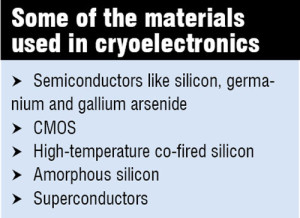
The possibility to confine light to the nanoscale and researches in superconductivity have evoked a large interest, leadly to rapid growth of cryoelectronics. Cryogenic robotics, low-temperature electronics and high-temperature superconductivity need to be collaborated to shape the future of lunar research and exploration.
One can imagine a future where heat-source-free cryoelectronics technologies can be tapped for sensors and other electronic components of satellites, ultra-low-temperature freezers, cryogenic surgical instruments and computers.
Read other Aerospace and Defence articles.
A BE in industrial production, the author is a lecturer, freelance writer, cartoonist as well as story writer






